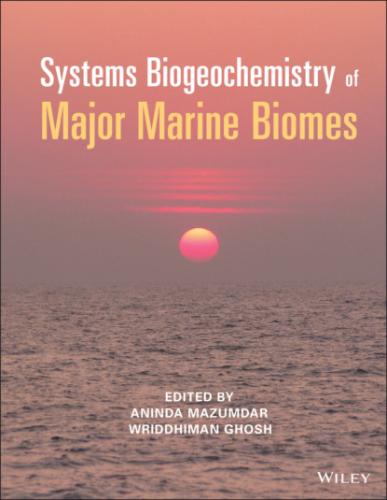Sulfur has four stable isotopes, 32S, 33S, 34S, and 36S, with average natural abundances of 94.93%, 0.76%, 4.29%, 0.02%, respectively (Coplen et al., 2002). Results are commonly expressed in the delta notation, placing the ratio of the two major isotopes 32S and 34S in a sample in relation to this ratio in a reference material and normalizing it to the Vienna Canon Diablo Troilite standard (VCDT; Krouse and Coplen, 1997):
Despite early studies recording all four stable sulfur isotopes (Hulston and Thode, 1965), only the last 20 years has there been an increasing number of multiple sulfur isotope studies that also recorded the minor 33S and 36S isotopes. Acknowledging the fact that modern day physical, chemical and biologically mediated reactions are generally associated with a mass‐dependent fractionation in sulfur isotopes, these publications express their results as deviation from the calculated mass‐dependent isotope fractionation (Farquhar et al., 2000):
Early sulfur isotope measurements in marine sediments were published by, for example, Thode et al. (1949, 1953) and Szabo et al. (1950) and provided the basis for the application of sulfur isotopes in earth and life sciences.
2.3. THE MODERN MARINE REALM
Today’s ocean is the largest modern sedimentary reservoir, with sulfur present as dissolved sulfate. A sulfate concentration of 29 mM is distributed homogeneously in the lateral and vertical dimension because of a residence time (8.7 × 106 years) that is substantially longer than the oceanic mixing time (around 103 years) (Holland, 1984). Dissolved oceanic sulfate exhibits a stable sulfur isotopic composition of +21‰ (δ34S vs. VCDT; Rees et al., 1978) and shows no discernible variations with depth (Figure 2.1) based on a compilation of data from several ocean basins (Böttcher et al., 2007). More recent accounts for the sulfur isotopic composition of seawater sulfate were presented by Tostevin et al. (2014), who reported an average δ34S value of +21.24 ± 0.44‰ and a Δ33S value of 0.050 ± 0.014‰, based on seawater sulfate samples from the eastern margin of the Pacific Ocean, offshore from the California and Peru coastlines, and by Johnston et al. (2014), who reported an average δ34S value of +21.15 ± 0.15‰ and a Δ33S value of 0.048 ± 0.006‰ for water samples from oxygen minimum zones in the Pacific and Atlantic Ocean. Significant deviations from the very homogeneous δ34S value of +21‰ exist solely in marginal seas as a result of the in‐mixing of isotopically variable but generally less 34S‐enriched riverine sulfate, showing a global average δ34S value of 4.4 ± 4.5‰ (Burke et al., 2018).
Depth profiles through the upper part of the marine sedimentary column indicate that the dissolved sulfate load contained in the porewater provides the principal electron acceptor for the microbially mediated mineralization of sedimentary organic matter via organoclastic sulfate reduction, once dissolved oxygen has been fully consumed (Jørgensen, 1982). At depths, ranging from millimeter to meter scale, the concentration of porewater sulfate becomes limited because microbial sulfate consumption exceeds sulfate supply via diffusion. The decrease in sulfate concentration with depth is accompanied by an increase in its δ34S value (Figure 2.2a). The residual porewater sulfate becomes progressively enriched in 34S due to the preferential utilization of sulfate containing the light 32S isotope during microbial sulfate reduction. In addition to organoclastic sulfate reduction, numerous studies (Jørgensen et al., 2004; Peketi et al., 2012; Lin et al., 2016) have revealed the complete consumption of porewater sulfate at depth when upwards diffusing (biogenic) methane is oxidized at the expense of sulfate. A consortium of methanotrophic archaea and sulfate reducing bacteria (Boetius et al., 2000) pursues this reaction. Termed sulfate‐driven anaerobic oxidation of methane (SO4‐AOM), this reaction frequently defines a distinct reaction zone at depth termed the sulfate–methane transition zone (SMTZ; Borowski et al., 1996). Thereby, the methane flux determines the depth of the SMTZ (Figure 2.2b). In the sedimentary column SO4‐AOM is recorded by abundant sedimentary (biogenic) pyrite that exhibits distinctly positive sulfur isotope values (Borowski et al., 2013; Lin et al., 2016; for further details, see text below).
Figure 2.1 Homogeneous sulfur isotopic composition of modern seawater sulfate as compiled by Rees et al. (1978), Böttcher et al. (2007), Tostevin et al. (2014), and Johnston et al. (2014). Vertical lines represent depth ranges of samples studied. VCDT: Vienna Canon Diablo Troilite standard.
Modern marine sediments, i.e. sediments deposited from a bottom water containing dissolved oxygen, contain on average 0.6 weight per cent of sulfur (Goldhaber, 2003), generally present as sedimentary pyrite and attributed to microbial sulfate reduction and subsequent precipitation as iron sulfide (Canfield, 2001a; Rickard and Luther, 2007). Microbial sulfate reduction, more specifically organoclastic sulfate reduction, is associated with a distinct isotopic fractionation of up to 70‰, generally displaying a δ34S value for the resulting sulfide that is 34S‐depleted compared with the parental sulfate. The magnitude in isotopic fractionation is determined by a multitude of factors including the availability and reactivity of sulfate and organic substrate as well as physicochemical boundary conditions, such as temperature. Milestones in our understanding in this respect were published by Kaplan and Rittenberg (1964), Canfield (2001b), Detmers et al. (2001), and more recently by Johnston et al. (2007), Sim et al. (2011), Leavitt et al. (2013), and Wing and Halevy (2014).
Figure 2.2 (a) Simplified depth distribution of changes in porewater sulfate concentration and sulfur isotopic composition of dissolved sulfate and sulfide as a consequence of progressive microbial sulfate reduction. (b) Depth distribution of sulfate as a consequence of an upwards methane flux of difference intensity. SMTZ: sulfate methane transition zone (Modified from Borowski et al., 1996).
Questions in studying marine sedimentary pyrite with sulfur isotopes center on identifying the principle processes related to its formation. Depth records for dissolved sulfide in porewater but more so for iron monosulfides and disulfides
